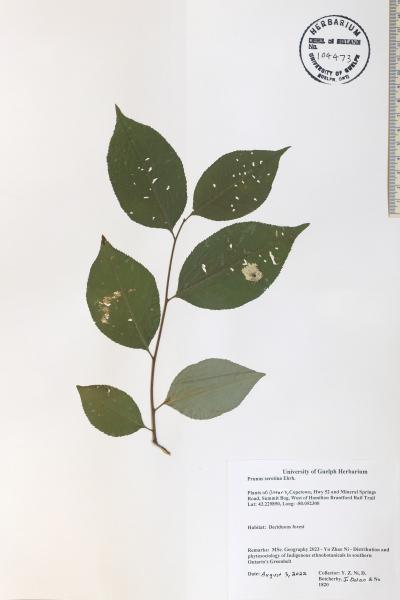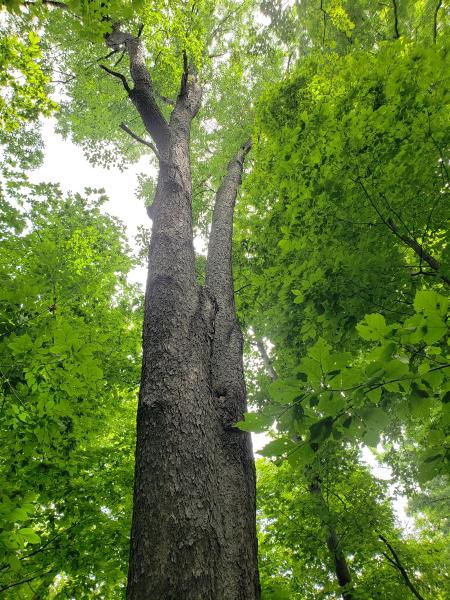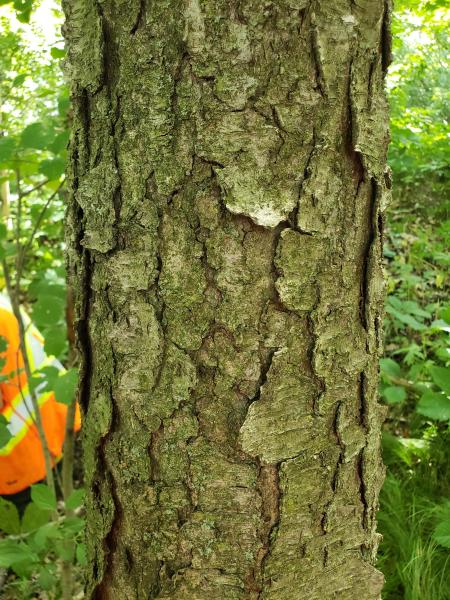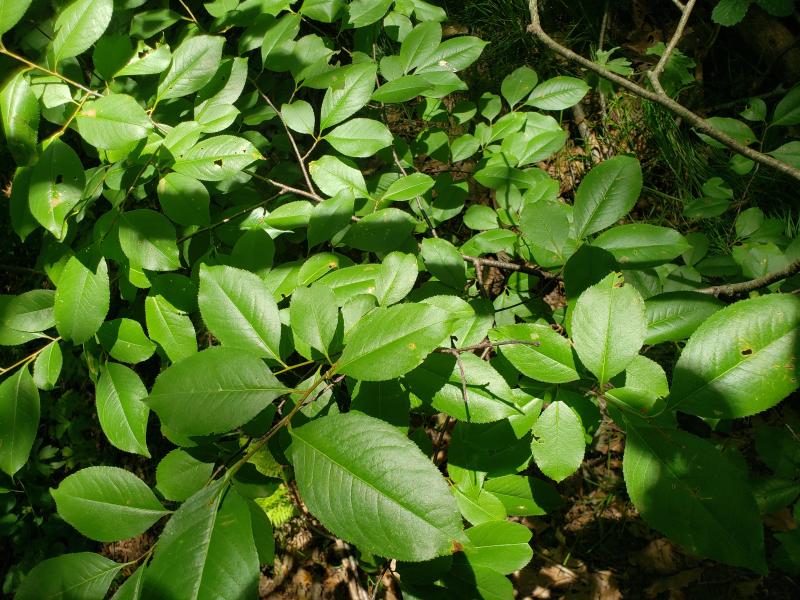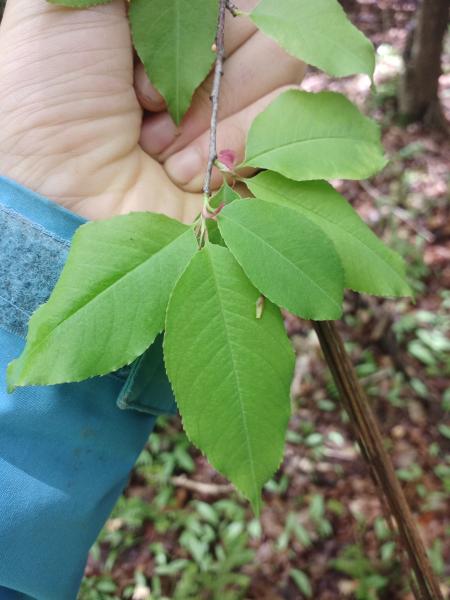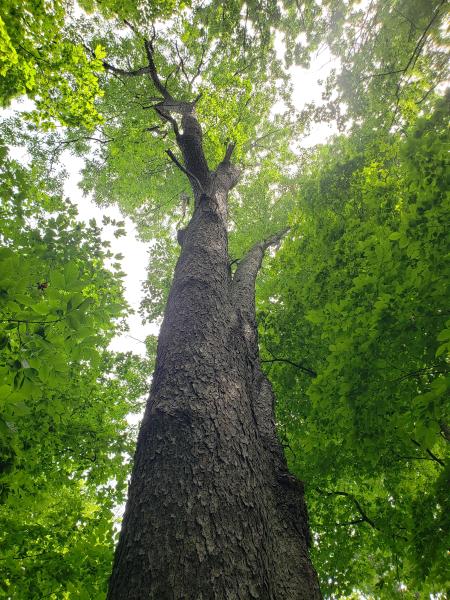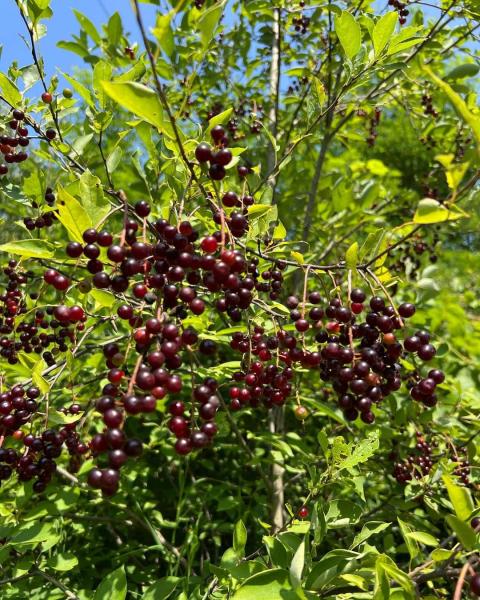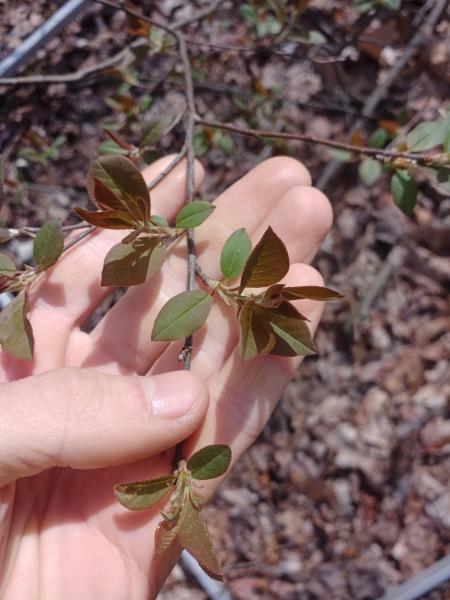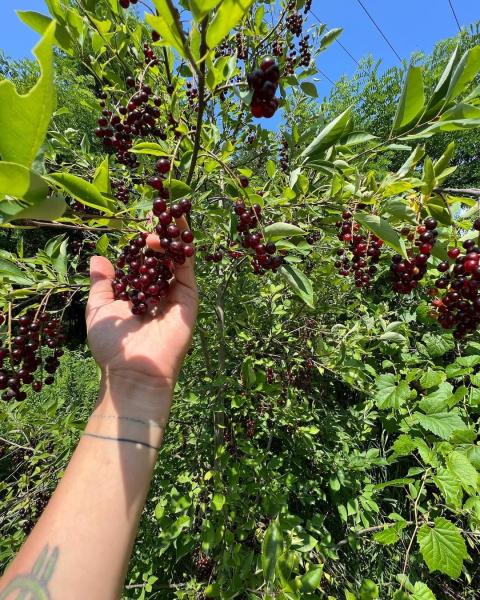Black Cherry and Chokecherry
Prunus serotina Ehrh. and Prunus virginiana L.
Rosaceae
Image
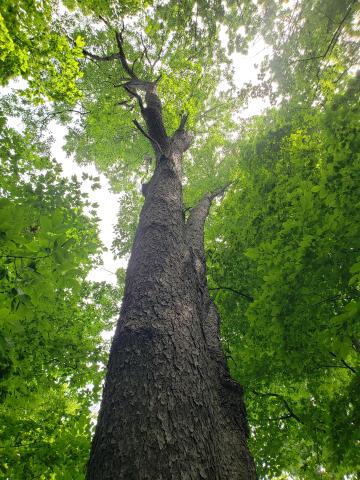
A large Black cherry tree growing at Cootes Paradise, RBG Hamilton, Photo credit: J. Dolan 2022
Names and Their Meanings
Black Cherry - Prunus serotina
Kanienʼkéha
é:ri, e:ri’kó:wa, tyotyò:ren
Anishinaabemowin
ookweminagaawanzh, ookweminan, ikwe'mic
French
Cerisier tardif
Chokecherry - Prunus virginiana
Kanienʼkéha
tyakonya’tawén:’eks, teyakonya’tawén:’eks
Anishinaabemowin
asasaweminagaawanzh, asasaweminan, baakinminaan, asasaweminogaawangh
French
Cerisier de Virginie
Black Cherry
Conservation Status
S5 (Secure) in New York; no status rank in Ontario or Québec
Chokecherry
Conservation Status
A large Black cherry tree growing at Cootes Paradise, RBG Hamilton, Photo credit: J. Dolan 2022
